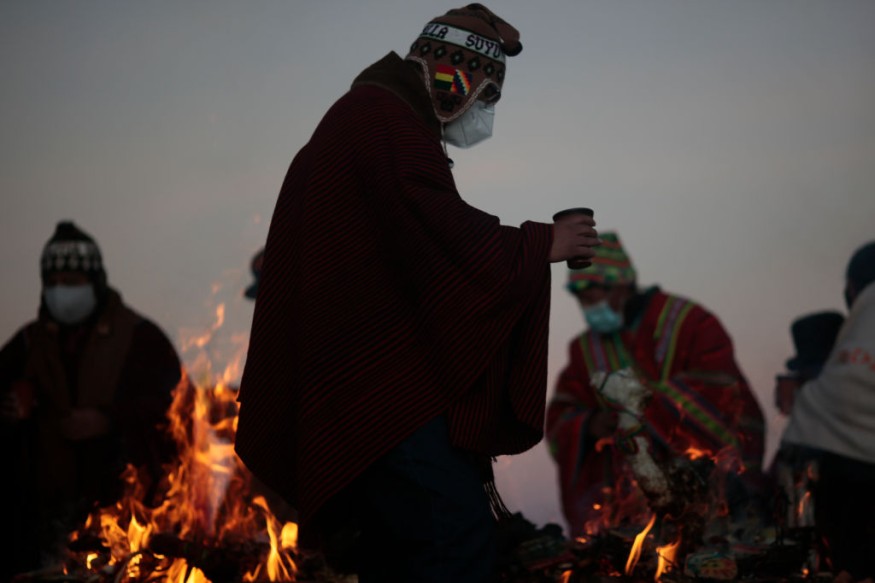Bolivia Culture: 5 Weird Bolivian Customs That You May Not Know

Bolivia has many bizarre customs or practices that baffle travelers due to the fusion of beliefs between indigenous religions and Spanish Catholicism.
People in Bolivia are deeply superstitious. Bolivians will go to great lengths or make extreme efforts to honor their traditions.
Here are some of the unusual customs in Bolivia to give you an idea about the Bolivians' practices that would seem utterly outrageous to travelers.
5 Weird Customs in Bolivia
Blessing of the Vehicles
According to Culture Trip, driving safely in Bolivia requires divine intervention due to some of its notoriously dangerous highways. It has reportedly become common to see reckless drivers speeding through narrow mountain roads, inching away from perilous cliff edges.
To get their vehicles blessed by a Catholic priest, locals have to travel to Copacabana, a town on the shores of Lake Titicaca. The ceremony entails tossing holy water, lighting firecrackers, and alcohol being sprayed over the blessed vehicle.
There are also Aymara yatiris or witch doctors who use incense, coca leaf, and prayer to invoke absolution from "Pachamama" or mother nature in exchange for her blessings and protection.
Alasitas Festival
Dreams could come true in the annual month-long cultural event Alasitas Fair or Feria de Alasitas. Taking place in La Paz, Bolivia starting every January 24, Bolivians buy miniature items in Alasitas market to offer to Ekeko, the Aymaran God of abundance, as they hope he will bring good fortune and wealth into their lives.
For their wishes to be granted, locals buy an Ekeko figure to be put into their homes for a year and then purchase teeny miniature versions of all the things they wish to obtain in the upcoming year.
They have these miniature items blessed by a shaman or priest and then pin them to the poncho of Ekeko figure and then pray for their desires to become a reality. The Alasitas Fair is a month-long celebration.
Burying Baby Llamas
According to World Nomads, Bolivians use dried llama fetuses to make an offering to Pachamama. These are then buried under the foundations of a new home for protection.
Rumors have it that large building projects require a human sacrifice. But these days, it's more likely a poor baby llama becomes the offering.
READ NEXT : Bolivia's Former President Jeanine Anez 'Stable' and Back in Prison After Suicide Attempt
Reading the Future Via Coca Leaves
Tarot cards and crystal balls are not really a thing in Bolivia. Instead, yataris in the area read the future by tossing a handful of coca leaves into the air and observing how they land. It covers such themes as health, finance, romance, and emotional well-being.
This centuries-old ritual has a strong following among indigenous people all throughout the Andean highlands of Bolivia and neighboring Peru and is taken very seriously.
Reading coca leaves for a glimpse of the future comes with a fee. But those who are unhappy with their fortunes can purchase a mesa (offering table) that can be burnt to provide spiritual cleansing and protection for up to three months.
Fiesta de las Ñatitas
The Fiesta de las Ñatitas in Bolivia makes Day of the Dead in Mexico look gentler by comparison. This macabre festival is usually held the week after All Saints and All Souls days.
In this traditional event, the Aymara people honor their unique bond with the helpful spirits of the deceased by decorating the real-life skulls of dead humans with accessories such as sunglasses, hats, and jewelry in the belief that their souls will provide protection and healing in return.
The human skulls are usually stored in shrines within the family home until the day of the festival when Indigenous Aymara go to a cemetery and parade the skulls in anything from colorful cardboard boxes to intricately carved wooden cases.
The Aymara people believe that the better their appearance, the more blessings that people will be granted in return. The skulls of family members are also preferred.
READ MORE : Bolivia's Second Largest Lake Disappears
This article is owned by Latin Post.
Written by: Jess Smith
WATCH: Bolivia Vacation Travel Guide - From Expedia
Subscribe to Latin Post!
Sign up for our free newsletter for the Latest coverage!












